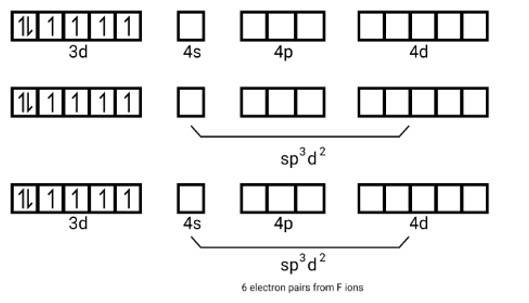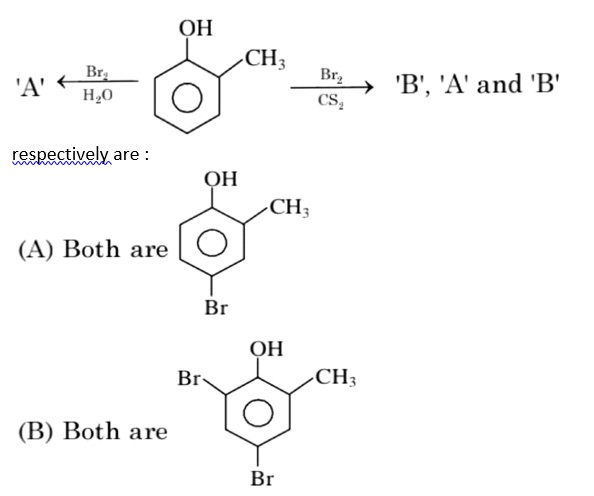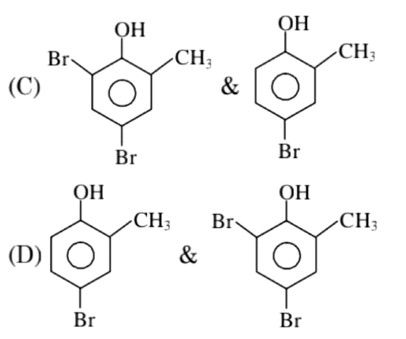Atomic number of Mn, Fe, Co and Ni are 25, 26 27 and 28 respectively. Which of the following outer orbital octahedral complexes have same number of unpaired electrons?
A: [MnCl6]3-
B: [FeF6]3-
C: [CoF6]3-
D: [Ni(NH3)6]2+
Atomic number of Mn, Fe, Co and Ni are 25, 26 27 and 28 respectively. Which of the following outer orbital octahedral complexes have same number of unpaired electrons?
A: [MnCl6]3-
B: [FeF6]3-
C: [CoF6]3-
D: [Ni(NH3)6]2+
-
1 Answer
-
This is a Multiple Choice Questions as classified in NCERT Exemplar
Ans: Correct option: A and C
The outer octahedral complexes are weak ligands, number of pairing electrons and high spinning potential.
[MnCl6]3- - electronic configuration of Mn = 3d5,4s2. Shifting the valence electrons become
Mn3+ ,3d4 and number of unpaired electrons is 4.
[FeF6]3- - electronic configuration of Fe = 3d6,4s2. Shifting the valence electrons become
Fe3+ ,3d5 and the number of unpaired electrons is 5.
[CoF6]3 - electronic configuration of Co = 3d7,4s2 shifting the valence electrons become
Fe3+ ,3d6
...more
Similar Questions for you
CoCl3.NH3 + AgNO3
x = 5
In H2O (polar solvent) dibromophenol derivative and in CS2 (non-polar solvent moneobromo phenol derivate is obtained.
3d => 4d => 5d CFSE increases for the same ligands.
Factual
⇒ leaching methods is used for those metal in which metal is more soluble than impurities and these are Al, Au, Ag, low grade Cu
σ bonded organometallic compound ⇒ M – C
σ-bond
and in π – bonded organo metallic compound
M – C
π bond
In ferrocene, there is π-bond
Taking an Exam? Selecting a College?
Get authentic answers from experts, students and alumni that you won't find anywhere else
Sign Up on ShikshaOn Shiksha, get access to
- 65k Colleges
- 1.2k Exams
- 679k Reviews
- 1800k Answers




